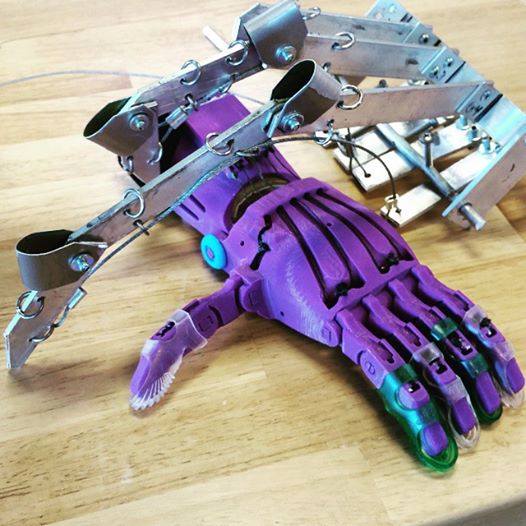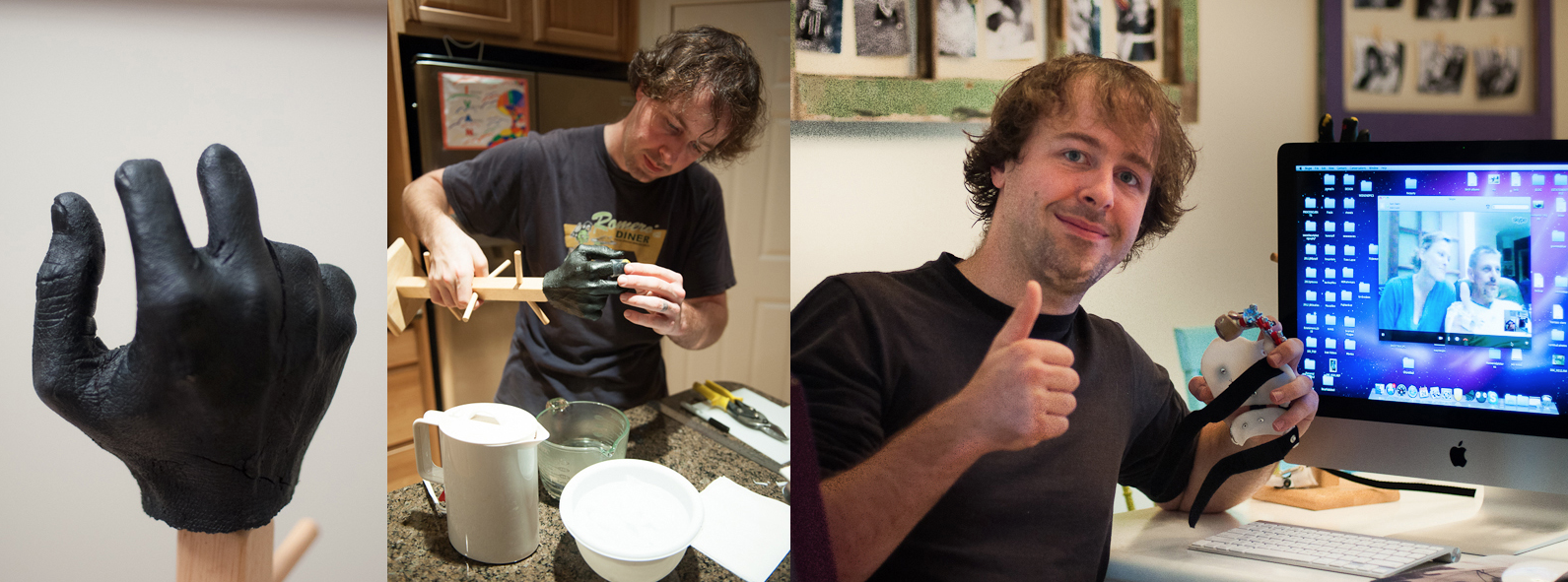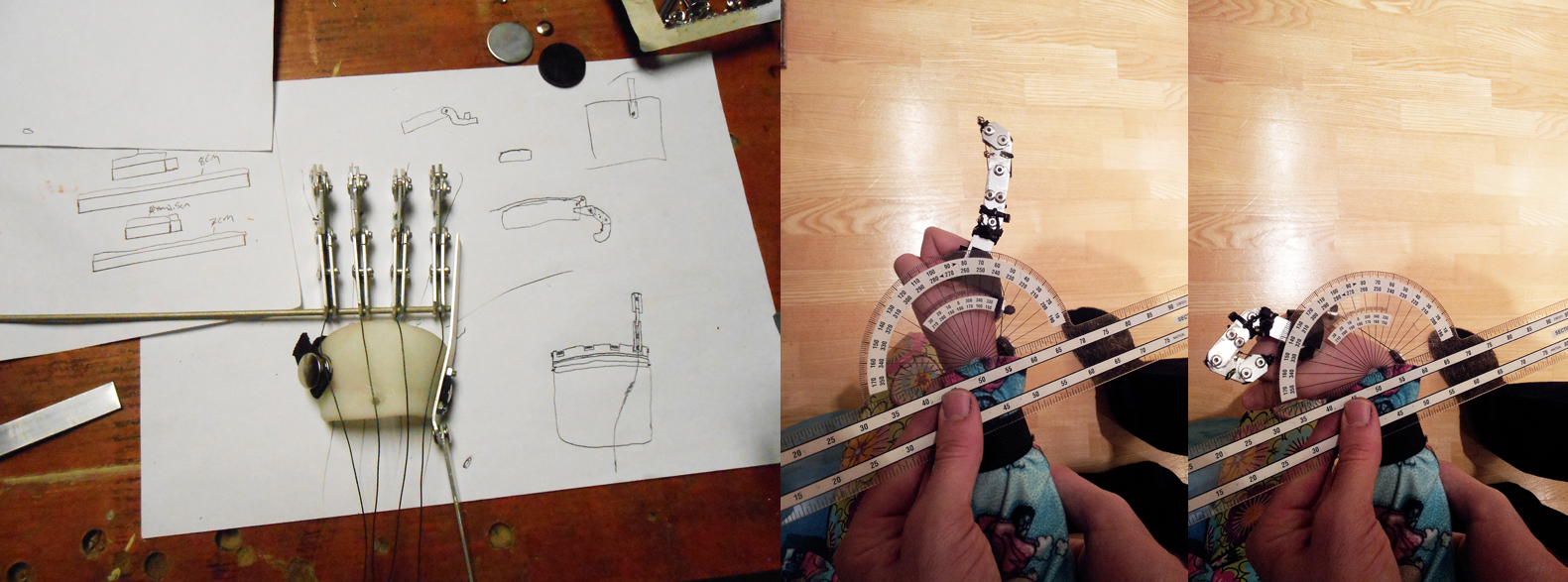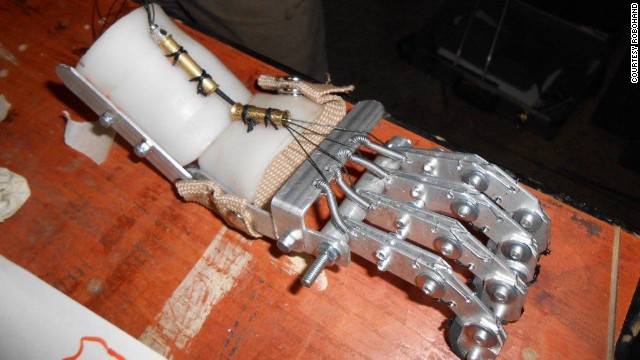It’s hard to believe eight whole years have passed since e-NABLE and a long and varied list of 3D printed prosthetics were created; however, it is also difficult now to imagine life in the 3D printing realm without this driving force always at work somewhere in the world, inspiring so many to volunteer in fabricating free 3D printed hands and arms.
 As the e-NABLE team points out, however, while many may see this organization as revolving around 3D printed replacement limbs, ultimately the central focus is all about ‘being kind to others and doing what you can, with what you have, where you are…to make a difference.’
As the e-NABLE team points out, however, while many may see this organization as revolving around 3D printed replacement limbs, ultimately the central focus is all about ‘being kind to others and doing what you can, with what you have, where you are…to make a difference.’
As they espouse all these qualities and more, thousands of volunteers have used 3D printers—sometimes their own, that of a school, or lab—to make hands and arms for individuals in need. From all walks of life many enlightening stories have emerged, from STEM classrooms creating prosthetics and creating challenges for other students, to a group in Istanbul 3D printing colorful prosthetics for kids, or individuals traveling to Nigeria to help a young boy in need, and so much more.
“The e-NABLE Community is made up of teachers, students, engineers, scientists, medical professionals, tinkerers, designers, parents, children, scout troops, artists, philanthropists, dreamers, coders, makers and every-day people who just want to make a difference and help to ‘Give The World A Helping Hand,” states the organization in a recent post about the eight anniversary of the e-NABLE movement.
e-NABLE’s initial roots actually lie in cosplay as designer Ivan Owen created a puppet hand for a convention he was attending with Jen Owen. The hand was so functional—and such a big hit—that he continued with the idea, but in a much different direction upon receiving a message commenting about the YouTube video he posted.
Richard, a carpenter in South Africa who had lost his fingers in a woodworking accident, wrote to Ivan and asked if he could take on a project like designing a finger prosthetic. Richard had tried the DIY route but needed help from someone with real experience. They worked through Skype, e-mail, and regular mail.
“During the design process, they had to use objects they could both find around their homes and respective countries. Sometimes this involved items such as toilet paper tubes, leather scraps, zip ties, fishing line, rubber bands, surgical tubing, duct tape and various other items they could find,” states e-NABLE.

Because Ivan and Richard were 10,000 miles apart, they had to work together through Skype and email.
Jen began blogging about the project and its progress, and soon they garnered the attention of the media. Communicating through on-line measures was not enough toward the end of Ivan’s work and necessary fittings with Richard so they began reaching out for funding with a crowdfunding campaign—and were even given frequent flier miles from one donor. Ivan went to South Africa and completed the single-finger prototype. Along with this project, Ivan was also in the process of working on a hand for a five-year-old boy—also living in South Africa—named Liam.
Once Richard’s prototype was completed, the two men began to put the finishing touches on a prosthetic for Liam, and shortly after, Liam and his family were invited to Richard’s home to see the new prosthetic. Liam was even able to help with the finishing touches on his prosthetic. Note, however, this was before Ivan discovered a viable plan for 3D printing!
“It was made from aluminum bar stock, rivets, screws, copper tubing, fishing line and some thermoplastic. While it was bulky, awkward and still missing a thumb, Liam was able to strap it to his arm and pick up a ball and other objects for the first time in his life,” states e-NABLE.
Both Richard and Ivan began discussing plans for new prosthetics as Liam would inevitably—and quickly—outgrow the one he had. Makerbot donated two 3D printers, allowing Ivan and Richard to viably work from a distance as Ivan went home but was able to email design files to Richard. He could then 3D print the parts and assemble prototypes for Liam to try out. They dubbed the first one the ‘Robohand.’ They also realized the incredible potential they had right in front of them for helping a multitude of children (and people of all ages) in need.
“They made the collective decision to forego any potential to make profits from this design and instead, published it to the internet as an open-source, public domain file so that anyone, anywhere in the world with access to a 3D printer – could make one for themselves or someone else in need,” states e-NABLE.
A formal website was created, volunteers began lining up, and the rest is history. During this span of eight years, many different users have used their creativity and engineering talents to 3D print a range of prosthetics—with one of the most popular being the superhero style—one that really encourages younger children to wear the devices that have been made for them, without feeling self-conscious; in fact, they often feel the exact opposite and are excited to show off their prosthetic fingers, hands, or arms.
Volunteers have also been involved in Hand-a-Thons and other exciting challenges. From 2014 on, there was a design boom, progressing into new devices like the myo-electric version. Fast forward to the end of last year, with over 10,000 members involved and the use of Enable Web Central, an online system that matches up recipients with makers.
“As of November 2019, nearly 7 years after the first device was created for Liam out of metal and scrap materials, there have been approximately 7,000 3D printed hands and arms created and gifted to children and adults in need in over 100 countries around the world. There are an estimated 30,000 e-NABLE Volunteers (Including students and teachers) who are helping to make a difference in their local communities, clinics and schools all across the globe.”
What do you think of this news? Let us know your thoughts! Join the discussion of this and other 3D printing topics at 3DPrintBoard.com.
[Source / Images: e-NABLE]
Subscribe to Our Email Newsletter
Stay up-to-date on all the latest news from the 3D printing industry and receive information and offers from third party vendors.
You May Also Like
Profiling a Construction 3D Printing Pioneer: US Army Corps of Engineers’ Megan Kreiger
The world of construction 3D printing is still so new that the true experts can probably be counted on two hands. Among them is Megan Kreiger, Portfolio Manager of Additive...
US Army Corps of Engineers Taps Lincoln Electric & Eaton for Largest 3D Printed US Civil Works Part
The Soo Locks sit on the US-Canadian border, enabling maritime travel between Lake Superior and Lake Huron, from which ships can reach the rest of the Great Lakes. Crafts carrying...
Construction 3D Printing CEO Reflects on Being Female in Construction
Natalie Wadley, CEO of ChangeMaker3D, could hear the words of her daughter sitting next to her resounding in her head. “Mum, MUM, you’ve won!” Wadley had just won the prestigious...
1Print to Commercialize 3D Printed Coastal Resilience Solutions
1Print, a company that specializes in deploying additive construction (AC) for infrastructure projects, has entered an agreement with the University of Miami (UM) to accelerate commercialization of the SEAHIVE shoreline...

































